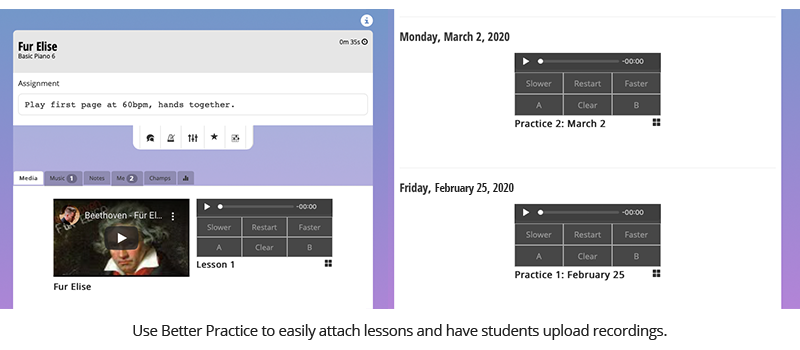Teaching During the COVID-19 Coronavirus Outbreak
There’s no doubt you’ve heard about COVID-19. Originating in China earlier this year, it’s been spreading alarmingly quickly to countries all around the globe. We hope that you, wherever you’re reading this from, have stayed healthy and are taking the proper precautions to stay that way! We’re hearing a lot of news in terms of how it’s progressing, and although we’re not certain about the future, we do know there exists some chance of having it disrupt our lives and livelihood. We’ve put together some ideas that can help you protect not only your students but yourself as well.
Precautions: Keep your students safe
As you continue to provide lessons today, here are some things you can do to provide a safe environment for you and your students:
- Request anyone who feels ill or is exhibiting any symptoms to stay home. A lot of teachers have strict policies on refunds and cancellations, and some parents may still make their child go to lessons anyway because it’s already been paid for. If at all possible, allow these families an exception (just for this period of time) to make up lessons or offer at least a partial refund if they are cancelling due to illness. For the sake of you and all of your students, you don’t want to risk it!
- Have students wash their hands before doing anything and/or keep a 60-95% alcohol-based hand sanitizer handy.
- Between lessons, wipe down commonly touched surfaces between each student, such as the doorknob, chair, and piano keys. Use Lysol wipes, or anything else that says that it will kill viruses (antibacterial only does not kill viruses!).
Lessons away from lessons
If a lockdown has occurred, or you simply want to keep yourself safe, how can you continue teaching so that your students continue to progress and practice while confined to their homes?
1. Synchronous Lessons (both online at the same time)
The obvious option, and the best long-term solution, is to switch to an online lesson model where students can meet you on a video calling platform at their usual lesson time. You can do this for individual or group lessons, although if the group is required to play together (such as band), it probably won’t work so well due to lag and everyone’s differing internet speeds.
You and your students would need to have your video positioned to show both yourselves and your instruments (depending on what/how you teach). This is trickiest on piano, but we have a few tips for that.
There are other things you have to prepare and consider for a smooth transition to online lessons. To read more tips about online lessons such as what platforms you can use, see this article. Also this one for tips from a teacher who teaches remotely.

2. Asynchronous Lessons (going online when you have time)
Another method would be to have students regularly submit recordings and other assignments while you send back feedback and their next steps. This would ideally be a more temporary solution - more of a “monitored practice” to keep students accountable and moving along while they are away from lessons. Students can submit a weekly recording of pieces they are learning to show their progress and send you any questions they have in the meantime. More advanced students tend to do better with this approach, since they their needs are more akin to coaching rather than teaching.
This option has less technology to set up and configure than with video sharing. In fact, you and your students probably have what you need to get started already, such as a device that can record (audio or video) and internet access.
You may tweak your fees for this service or leave it the same, depending on how much you put into it. Some ways you can put in more value is to record lessons for each student at the start of the week. You can also give suggestions, corrections, and answer their questions through a video as well. It’s a lot more personal and engaging, and encourages students to stay on.
Better Practice gives you a platform to do all of these things easily, as well as monitor how much your students are still practicing. They will have the social features so that even in a lockdown, they won’t feel alone while practicing.
3. Extra assignments
Even if you or your families take this time as a complete break from lessons, students can continue to practice. If you use Better Practice, you can simply load up some new assignments or projects for the student to work on while they are out, and our smart engine will do the rest. See this article for more details.
Stay safe, and keep your students safe with these precautions. If it comes to a lockdown, it doesn’t mean you have to stop teaching! Be prepared with this knowledge, and let your students & families know that you are prepared for these options should it come down to it.
 Better Practice Blog
Better Practice Blog